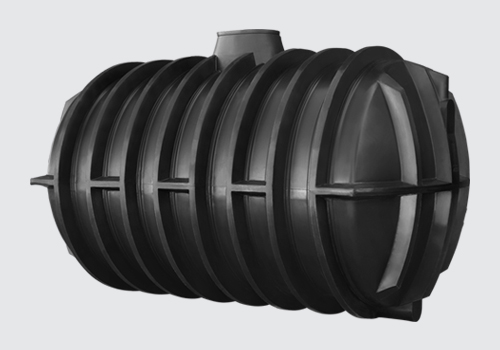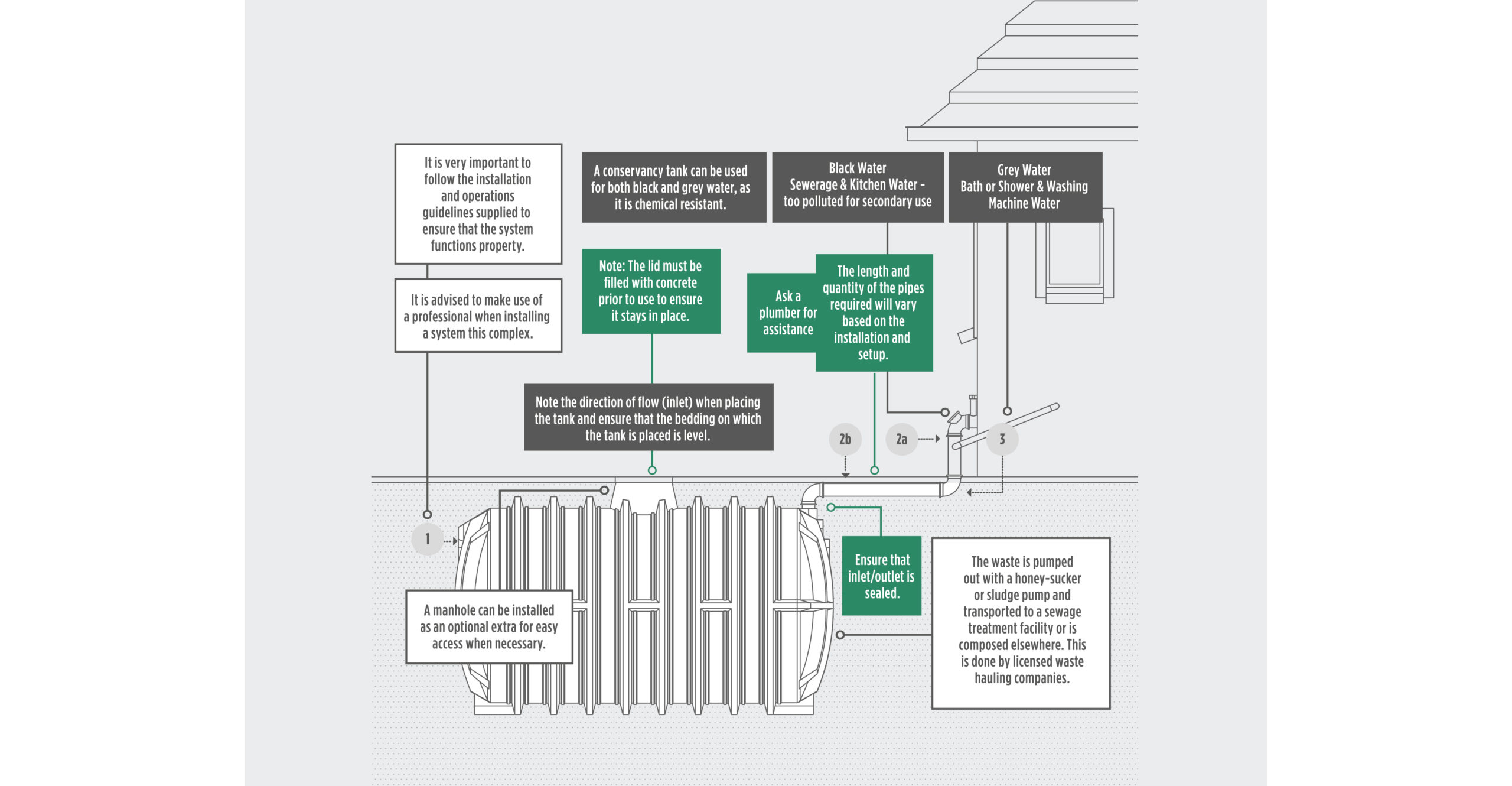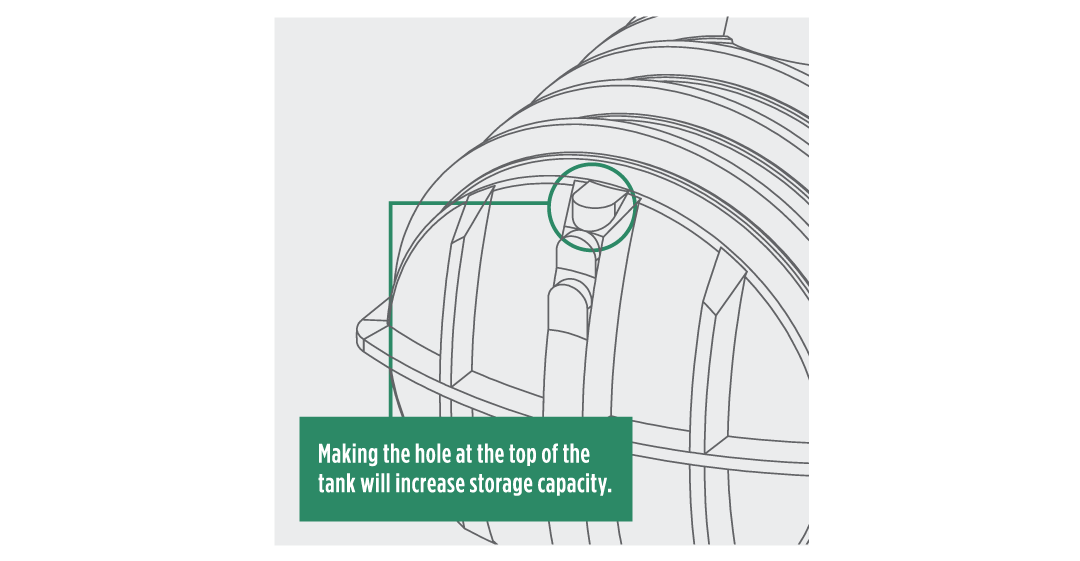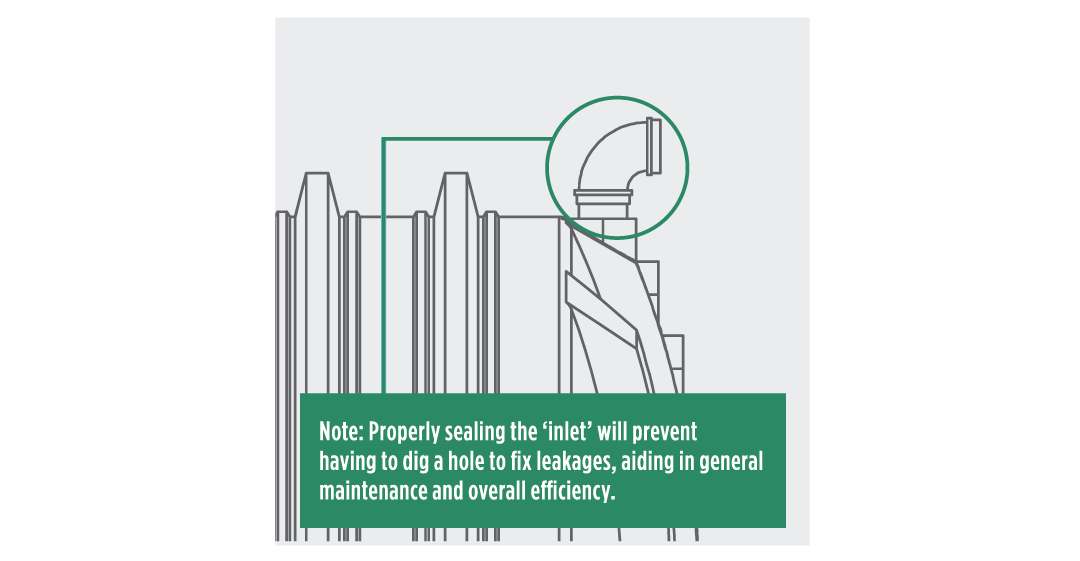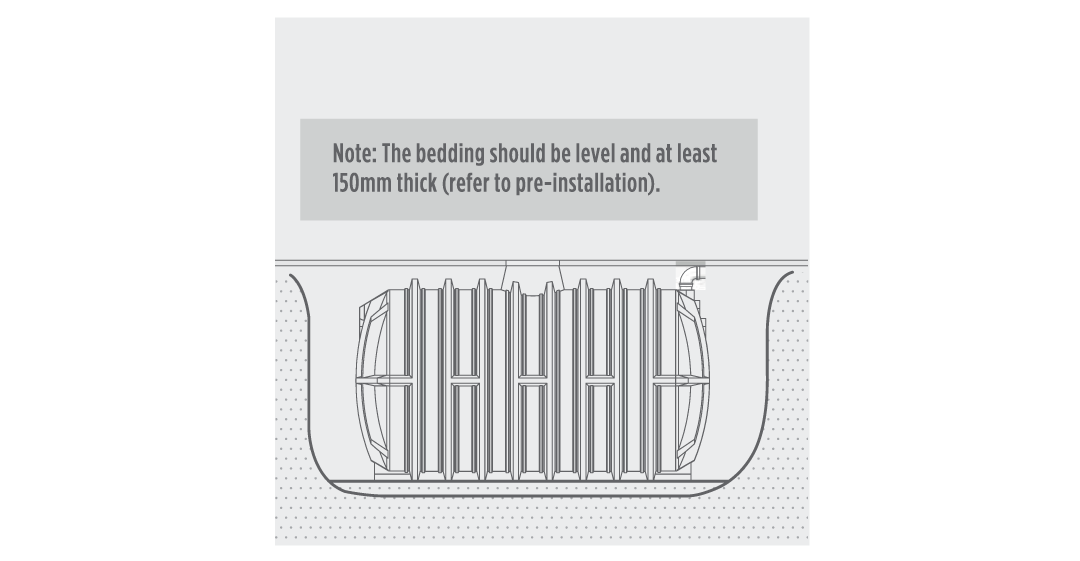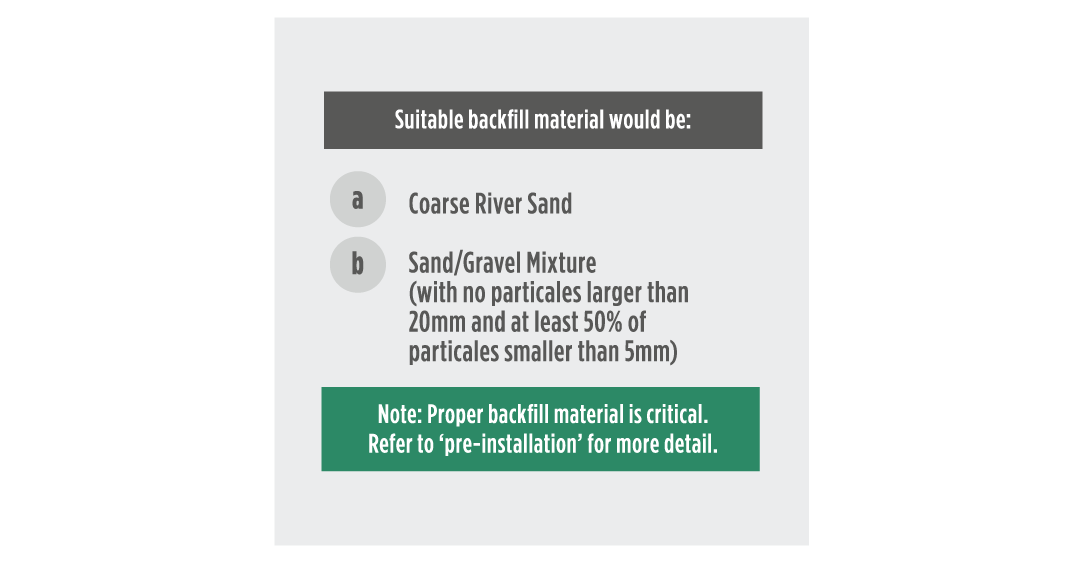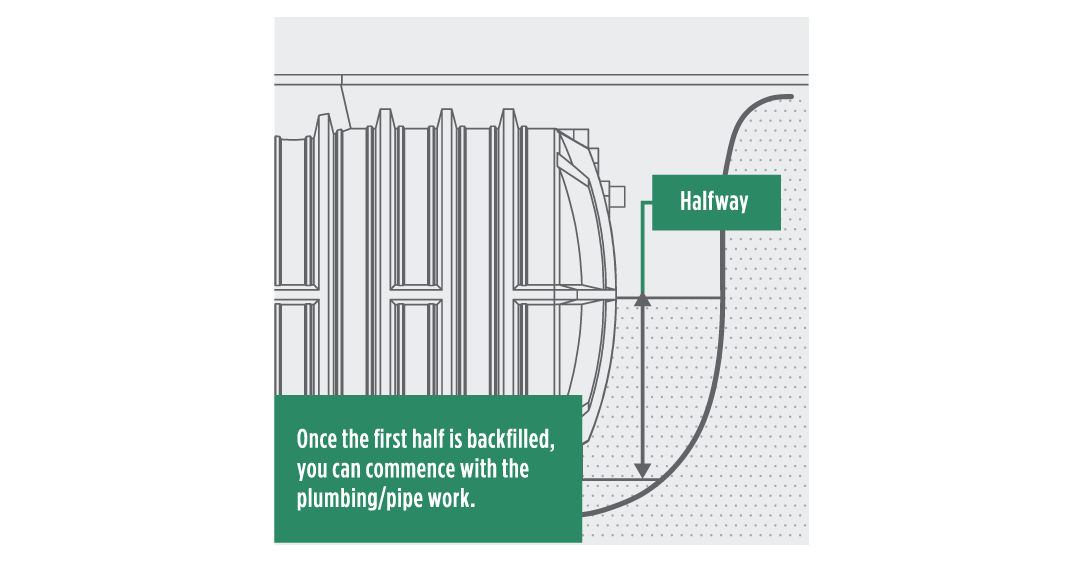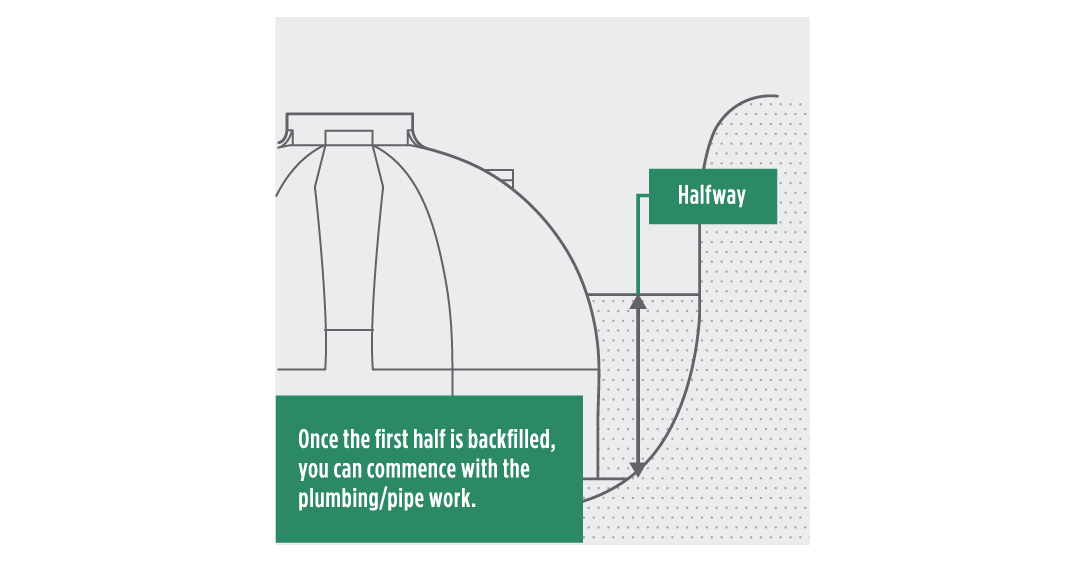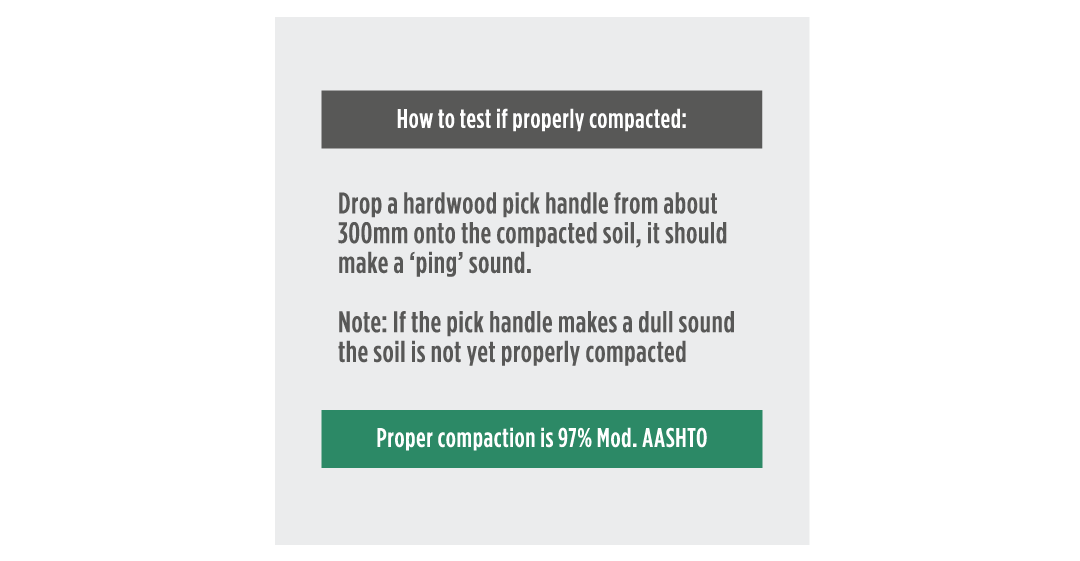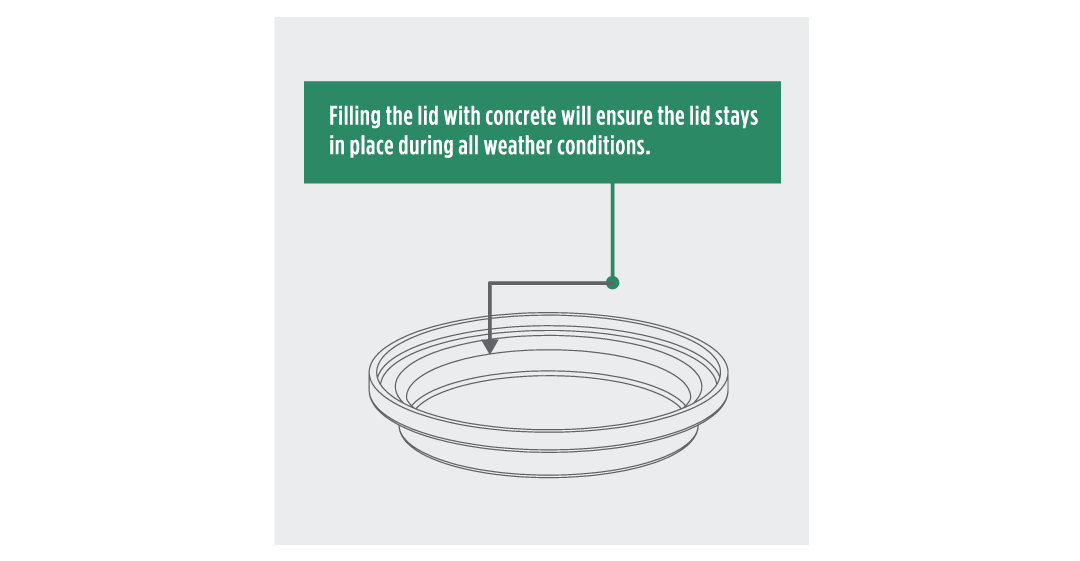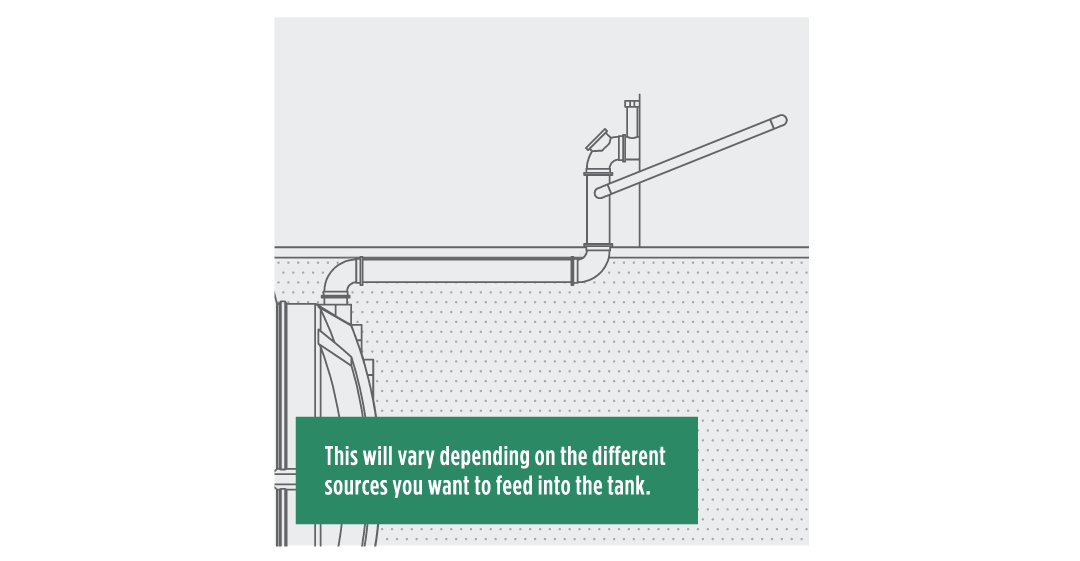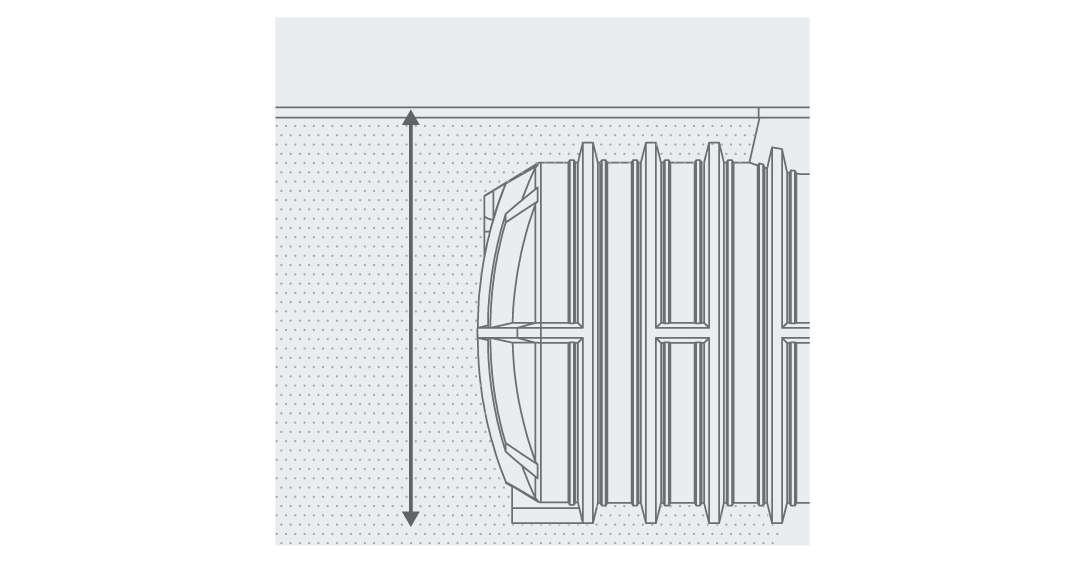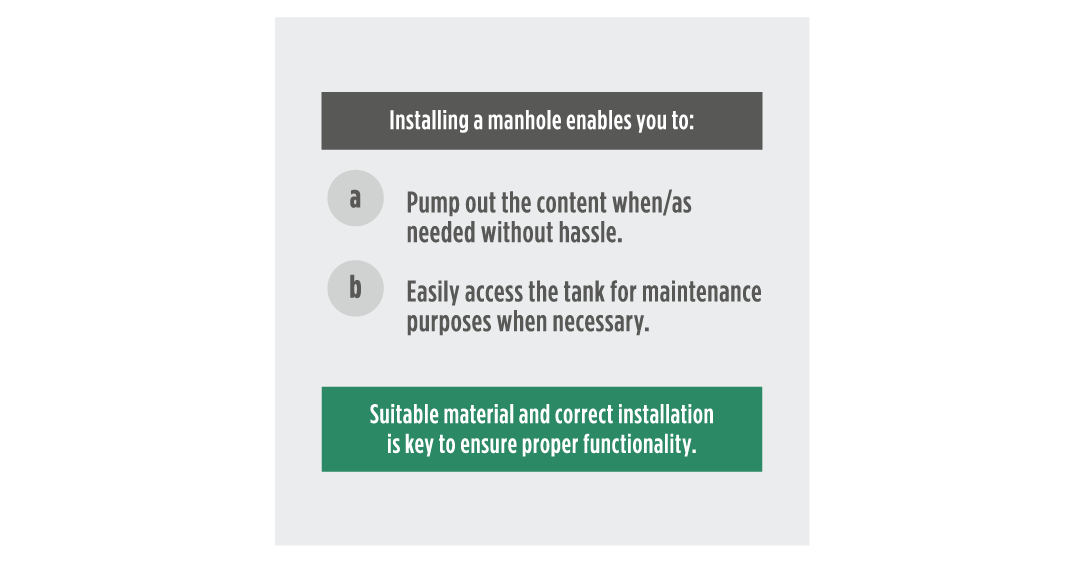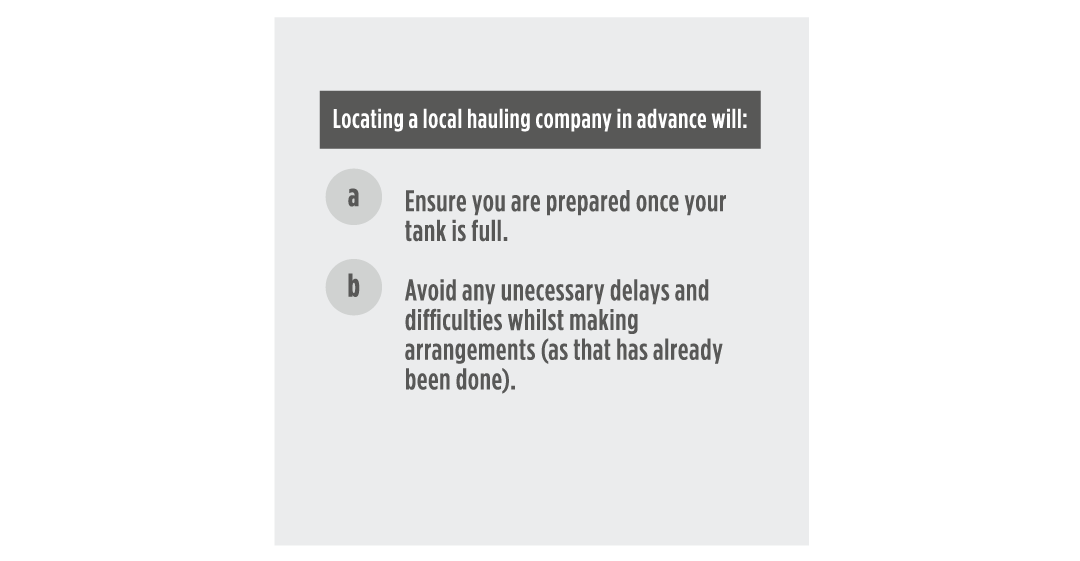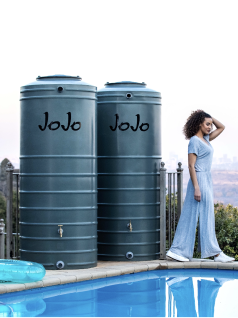Maintenance
Although conservancy tanks are fairly maintenance-free, there are a few things you can do to ensure that your system functions properly.
1. Ensure that proper installation procedures are followed.
It is vital to follow all installation guidelines and manufacturer specifications to ensure proper functionality and reduce maintenance after installation.
2. Ensure lid remains in place.
When installing the tank, the lid is filled with concrete prior to use to ensure that it stays closed off. It is, however, important to double-check every now and then to make sure that nothing falls into the tank or no effluent leaks out of the tank (effluent is not safe and carries disease-causing germs).
3. Keep a watchful eye.
If you notice any of these warning signs, contact a professional septic company/preferred installer immediately for assistance:
• Surfacing sewerage or wet spots
• Gurgling sounds in the plumbing system
• Slow draining fixtures

